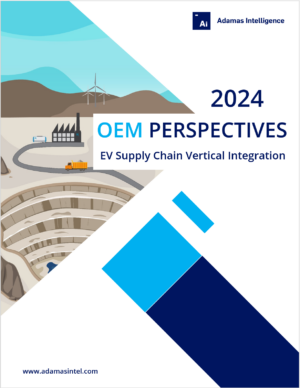Lithium in average plug-in hybrid up 20% year over year

Battery bulge
Last year 408,214 tonnes of lithium carbonate equivalent (LCE) were deployed onto roads globally in the batteries of newly sold passenger EVs, representing a 40% (or 115,804 tonne) increase over 2022.
Of the total, just under 59% or 239,632 tonnes were in the form of lithium carbonate and 41% or 168,582 tonnes were in the form of lithium hydroxide.
Batteries are being bulked up across EV types, but PHEVs are running far ahead of BEVs and HEVs.
In 2023, the average PHEV sold globally had a 21.0 kWh pack, representing a hefty 22% rise over the year prior, Adamas data shows.
Consequently, the amount of lithium contained in the average PHEV’s battery also jumped higher, up 20% from 11.0 kg to 12.9 kg, year on year.
For BEVs, a 7% increase in the average unit’s battery capacity year-over-year fueled a more modest 6% rise in lithium loading per unit sold, from 34.6 kg to 36.6 kg.
Over the course of 2023, the average PHEV sold globally contained 35% as much LCE as the average BEV, up from 31% in 2022.
In total, the average passenger EV (including BEVs, PHEVs and HEVs) sold globally in 2023 contained 21.1 kg of LCE, up 7% year-over-year.

Adamas take:
For lithium suppliers to the electric vehicle industry, the rise in average battery capacity across all EV types and the attendant rise in lithium use per unit provides some support as the EV sales makeup in many countries shifts to hybrids and LFP battery-equipped EVs, particularly in China.






